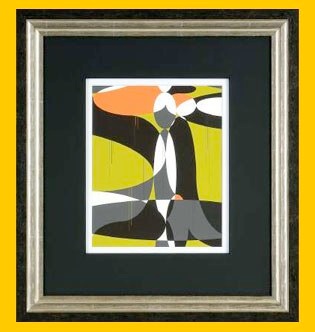MOUNTING
Mounting artwork, such as a print or a poster, is the perfect process to prevent it from bubbling or waving in a frame. There are many techniques in the mounting services including ones for archival materials.
Standard Mounting
● Tape Mounting is not a permanent process, and the artwork can be easily removed.
Spray mounting is permanent and often used for photographs.
● Dry Mounting is permanent - cannot remove artwork later. A sensitive adhesive film is activated by a heat press machine and used to permanently attach artwork to a substrate, typically a foam core. Please be advised that an artwork of great value should not be dry-mounted since the process can greatly affect the resale value. Our experienced designers are at your disposal for any questions on preservation and conservation techniques.
● Form Mounting is for artwork that is already mounted to a board which is cut to the exact size of the artwork. The piece is usually meant to be matted with one or more mats.
Conservation Mounting
● Acid-Free Framing Tape. Your artwork can be mounted onto an Acid-Free foam board or mat. Only Acid-Free tape is used in this process.
● Corner framing "pockets" & "Art Saver" strips.
● Museum Conservation Hinging. The ultimate protection.
● Stretching, Lacing, and Sewing Fabric. These are other archival mounting techniques that are preferably used for items such as flags or jerseys. They are stretched and attached to an Acid-Free mat or foam board with needles. This allows a precise placement of your item and is completely reversible.
Canvas Stretching
Stretching a canvas has to be properly done to display oil paintings, Giclee Prints on canvas, or other canvas media. If the canvas is too tight, the image could be damaged and the stretch board could bend, and if it’s not stretched enough, then you will have waves or bubbles where the canvas is loosely pulled. There are typically three different methods to stretch your canvas which would be applicable to either a canvas transfer, a print on canvas, or an original oil on canvas.
Standard Stretching is where the whole image is carefully shown on the front and none of it on the sides. The staples are placed on the sides of the piece. This method is usually used when a frame is added to the piece for a cleaner display and to enhance the beauty of the art.
Museum Stretching is when the whole image is displayed on the front of the piece with the plain white canvas showing on the sides. The staples are placed on the back of the stretch board and do not show. In some cases, the artist prefers the sides to be painted black and in other cases, the artist may prefer painting it with a color that is complementary to the colors in the painting itself. We treat the sides to the owner’s specifications in order to stay faithful to the artist’s intentions
In Gallery Stretching, just as in Museum Stretching, the staples are placed on the back of the stretch board, but the edges of the image are wrapped around the sides. The plain white canvas does not show. Both Gallery and Museum Stretching could be hung with or without a frame. However, if you use Gallery Stretching and a frame, the image on the sides will be lost.
At Art and Frame World, we cut our own stretch boards to the exact sizes of the artwork, depending on the stretching technique you select. We have access to stretching boards with different thicknesses for small and large size canvas. Please ask our consultant for details.




